Nature Quest: An outdoor gaming adventure for families
My family had fallen into a rut. More time indoors was equating to more time on screens. Gaming with screen names, avatars and portals in a dynamic online world captivated my son, Max, and his imagination for hours on end. We were, and are not, alone in this indoor state of inertia.
Reports show children spend as much as 90% of their time indoors, with more than 50 hours a week on screens. As a former outdoor educator, I was determined to break this indoor trend and get my son outdoors. But, I knew I needed to meet him where he was. I was confident I could harness his love of gaming to guide him into another playscape—nature—where he could thrive and we could have family time for more play and more connection. After all, I’d done it once before.
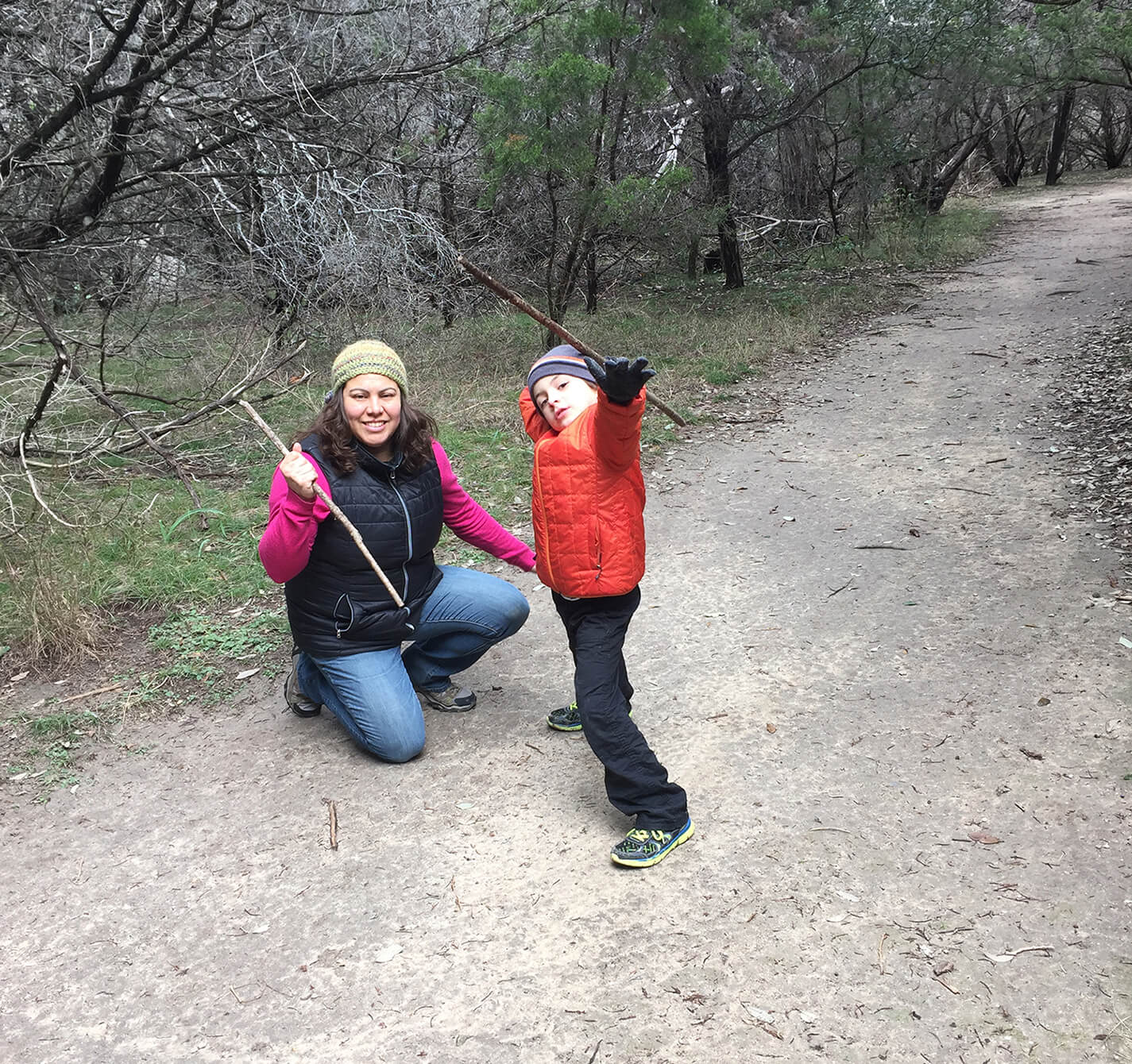
Monica and Max on their way to the park.Photo credit: Monica Lopez Magee
Dial back the time clock to 2015. I loaded up a backpack with water, snacks, sunscreen and a book for what I envisioned to be an all-day outing with Max and me relaxing under a tree after a walk to our local park. Yet, with the house in sight and the dog still in the process of being clipped onto the leash I hear, “Are we done yet? How far are we going? I’m tired.” My heart sank.
In pure survival mode and with a desire to preserve my picture-perfect outing I responded, “We can’t turn back yet, we must transport ourselves two more blocks where we will meet the blackbirds who hold the secret for the gems hidden at the park.”
My son, Max, came to a full stop. I was certain he was going to turn around and head home. Instead he quipped, “How do we know the birds are friendly?”
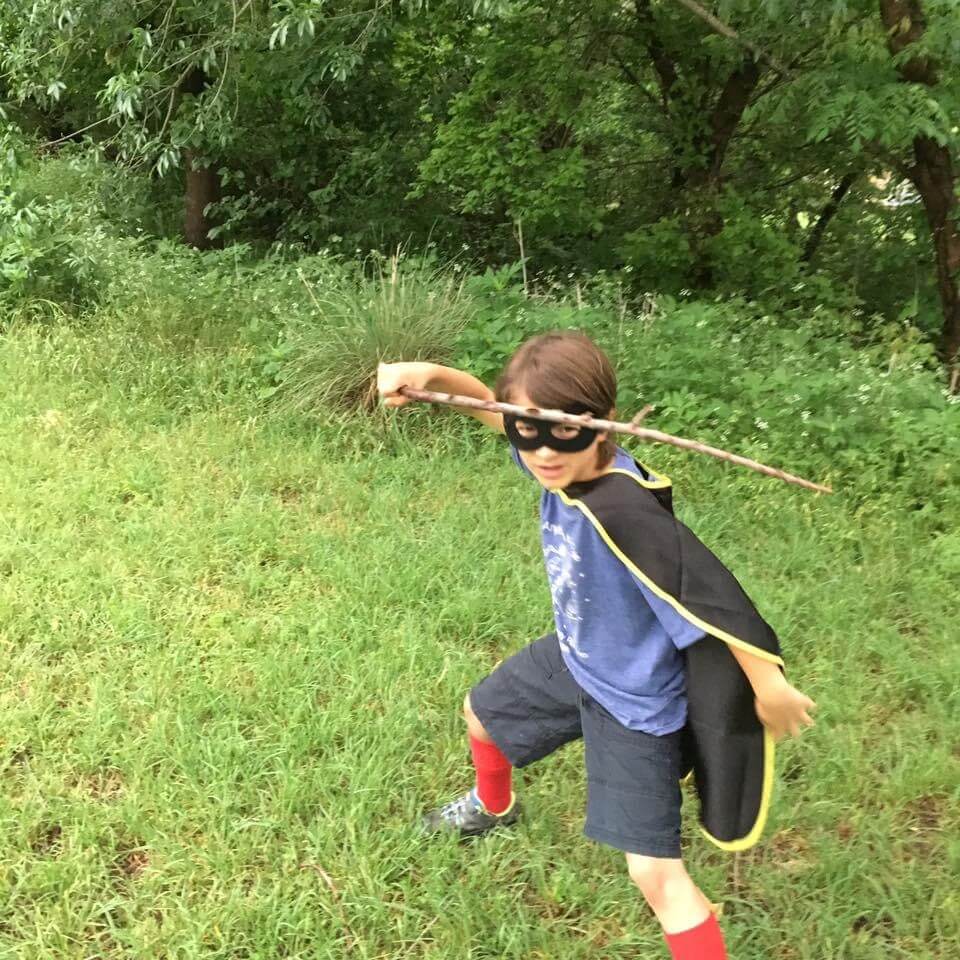
Max with his sword defending himself from the birds.Photo credit: Monica Lopez Magee
“Hmm, I’m not sure. What do you think?” I said a bit too eagerly. He went on to comment, “We will need something to defend ourselves with just in case.”
Now it was my curiosity that was piqued. He declared the smallest of twigs a wand that could cast a spell on the birds to keep them from flying. Better yet, if he cast the spell, the ability to fly was transferred to him as a superpower. Turns out the birds were friendlies, but they warned us of the cactus patch we would need to cross next.
We decided this was a good thing. We would harvest the water from the cactus and store the spines to build up what would become a small chest of resources. Berries for potions. Pecans for food. And so it went, his imagination creating layers upon layers of stories I could hardly keep up with.
At that moment, I was in awe of his creative mind. I came to realize there was something more at play, literally. It was about play. Sociologist Mildred Parten in 1932 and K.R. Ginsburg in 2007 classified types of play into dramatic, imaginative, constructive and physical, reporting how children can experience immense amounts of learning as well as physical, social and emotional benefits through these different types of play.1,2 My son was naturally falling into this space.
I say “naturally” but perhaps that’s a stretch. His time playing on screen entails participating in and creating virtual worlds where players must strategically analyze and predict outcomes. Take MineCraft where players design, build, explore, gather resources and engage in combat in a 3D-generated world. Consider Animal Crossing where a social simulation requires relationship building with villagers and where players use plants and trees to construct an island—or Plants vs. Zombies where players place different types of plants and fungi, each with their own unique offensive or defensive capabilities (adaptations!), around a house in order to stop zombies from reaching them.
Still skeptical that this type of play can work for you and your family? Harken back to your childhood days and let nature be your gameboard. The ground was hot lava, quick sand or a flood. A stick was a sword or a magical wand. Leaves helped to make a crown, rocks blasted open portals. The splendor is in the journey with your child. No preparation, no supplies, and no prior knowledge of the outdoors are required.
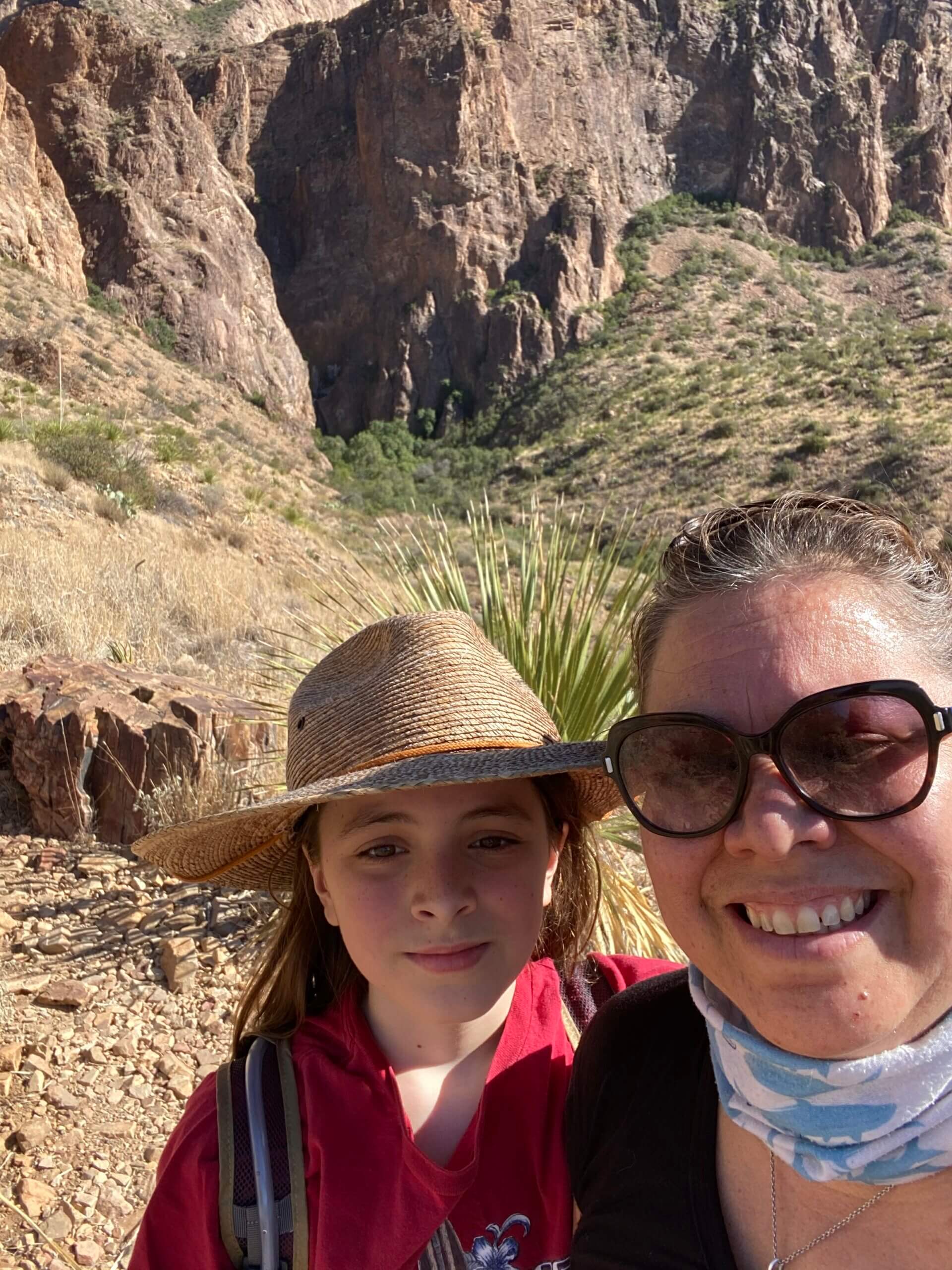
The author, Monica, and her son Max enjoying the outdoors.Photo credit: Monica Lopez Magee
My son and I finally arrived at the park that day six years ago. I never did read the book under the tree. There was no time to rest. The birds chirping warned of storms brewing. We (imaginatively) collected leaves for the tarp, which would protect us from the rain and camouflage us from the pterodactyls, which proved to be the final encounter before we retrieved the gems now upgraded to firestones. The adventure elevated us to another power level. Powering up included a new superpower; his was invisibility and mine was flight.
To this day, my now twelve-year-old son and I still play in this way. Sometimes our play happens in our backyard and other times on our more extensive multi-day paddle and backpacking trips. It happens everywhere, because nature is everywhere.
We’ve also carried storylines while waiting for the bus and on road trips. Our outdoor experiences have morphed as much to the environment surrounding us as has the evolution of Max’s video games.
Our fantasy battles meet playful exploration and extensive tracking of powers and fuel. Max has adopted every super power imaginable. We have dodged icebergs (during our once-in-ten-years snow in Texas this past February), traversed raging waters (creek passages), claimed a cave (bus stop bench), and survived countless battles and wounds with metals, gems, fuel and much more as our reward. I hold fast that our biggest reward is time together and the memories we’ve made along the way.
The take-away? I realized I could harness Max’s love of gaming to increase his love of nature. As long as we are in nature, together, the potential to explore, create and experience the natural world are endless.
Author’s Note:
The Children & Nature Network (C&NN) believes that families are critical to helping children develop a love of the outdoors. Families and caregivers can be facilitators of what educators call environmental education, which can be far more than simply learning facts about nature. Environmental education (EE) is about building emotional connections to the natural world and to other people. The EE community has a wealth of resources and curricula, but few are family-focused in a way that meets the needs of parents and caregivers who have little to no EE training.
With this in mind, C&NN worked closely with educators and parents to develop a meaningful, practical and immersive EE curriculum designed for families called Nature Quest. Through a series of activities that include “Missions” and “Quests,” Nature Quest combines different types of play and uses nature as a game board to promote whole family engagement and an understanding of environmental concepts. By layering play-based activities, inquiry and stewardship in a gaming format, Nature Quest gives children tools for self-guided exploration and learning while empowering parents with a storyline to sustain play.
Footnotes:
1Parten, Mildred; Newhall, S. M. (1943). “Social Behavior of Preschool Children”. In Barker, Roger G.; Kounin, Jacob S.; Wright, Herbert F. Child Behavior and Development: A Course of Representative Studies. New York: McGraw-Hill. pp. 509–525.
2Ginsburg KR;. (2007, Jan). The Importance of Play in Promoting Healthy Child Development and Maintaining Strong Parent-Child Bond: Focus on Children in Poverty. American Academy of Pediatrics, Committee on Communications; American Academy of Pediatrics Committee on Psychosocial Aspects of Child and Family Health, Pediatrics. 2007 Jan;119(1):182-91. http://pediatrics.aappublications.org/content/pediatrics/129/1/e204.full.pdf
1 Comment
Submit a Comment
-
Network News
POLICY UPDATE: Policy and advocacy for the children and nature movement
-
Voices
Binoculars, bald eagles and my journey as a Black birder
-
Richard Louv
THE WONDER BOWL: Ten Spring and Summer Nature Activities for Kids and Adults
-
Network News
Minneapolis Spotlight: The promise and possibilities of parks for youth
-
Voices
Why nature is my motherhood ally


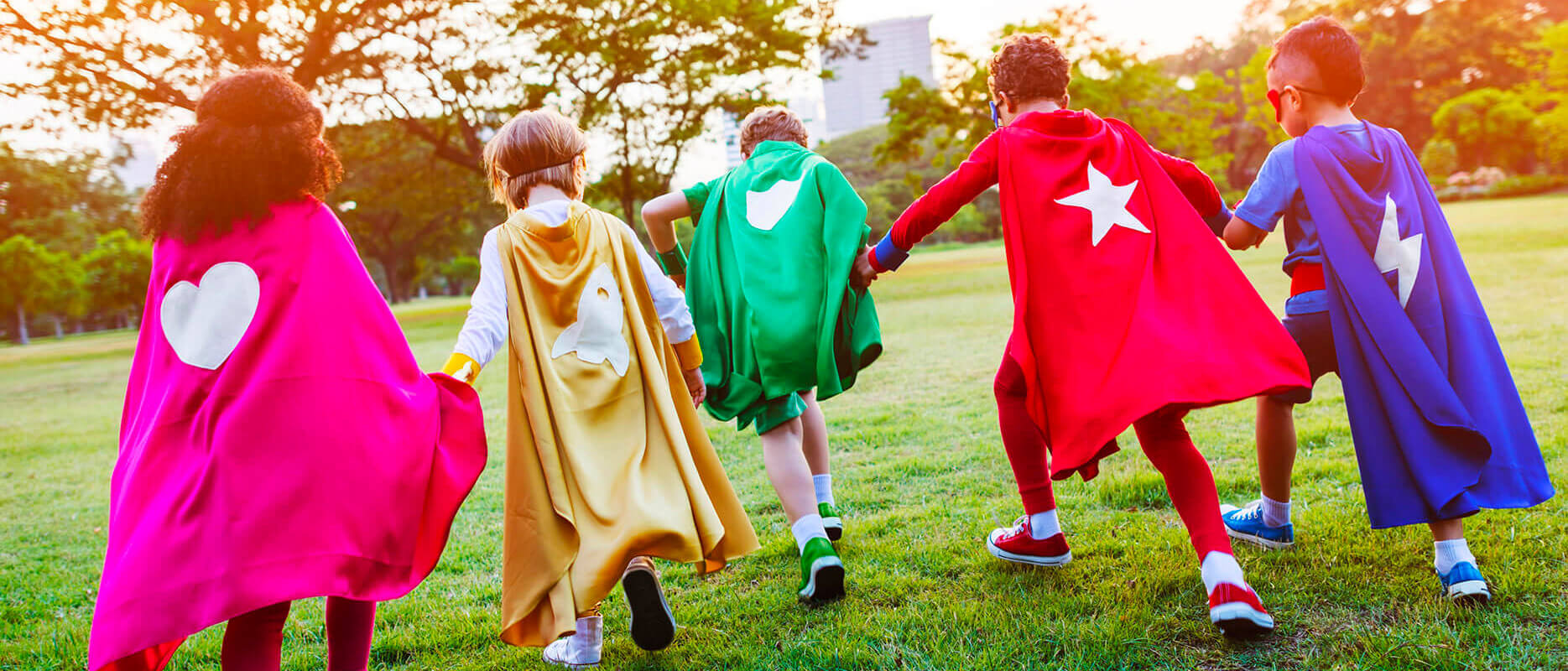

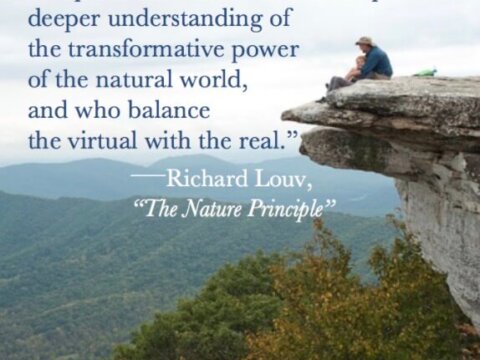
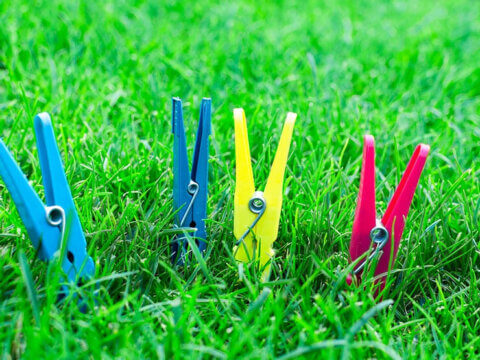
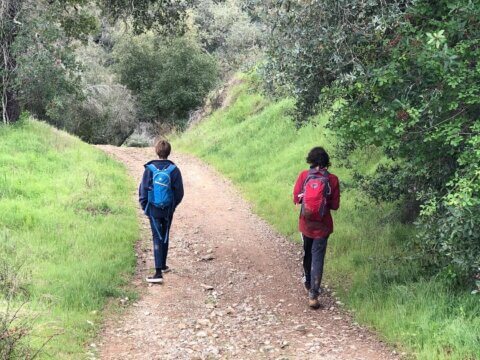
Monica so eloquently captures and awakens the hope we have for our children to experience the wonders of this earth that surround us as we journey through life. Thank you, Monica. May your wings carry you safely on your adventures.